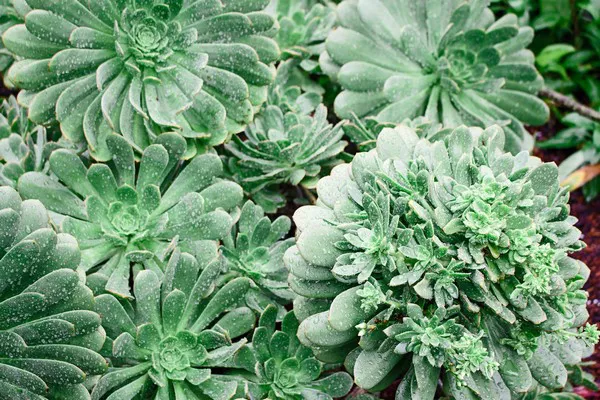Succulents have gained immense popularity among plant enthusiasts due to their unique beauty, low maintenance, and ability to thrive in various conditions. These fleshy, water-storing plants come in a plethora of shapes and colors, making them a delightful addition to any indoor or outdoor space. However, despite their resilience, succulents are not immune to certain challenges, with root rot being a common and potentially fatal issue. In this comprehensive guide, we will explore effective strategies on how to prevent root rot in succulents and maintain their overall health and vitality.
1. Understanding Root Rot in Succulents
Root rot is a condition caused by excessive moisture around the roots of plants, leading to the decay of the root system. Succulents are naturally adapted to arid environments and have evolved to store water in their leaves, stems, or roots. However, when they are exposed to prolonged periods of wet soil or improper drainage, their roots can become vulnerable to rot, which compromises the plant’s ability to absorb water and nutrients.
2. Selecting the Right Pot and Soil
Pot Selection: Choosing the right pot for your succulents is crucial in preventing root rot. Opt for pots with drainage holes to allow excess water to escape. Avoid decorative pots without drainage or containers that trap water, as they can lead to waterlogged soil.
Well-Draining Soil: Use a well-draining soil mix specifically designed for succulents or create your own by combining potting soil, coarse sand, and perlite or pumice. This soil composition promotes good aeration and prevents water from pooling around the roots.
3. Watering Practices
Moderation is Key: Succulents have unique water needs, and overwatering is a primary cause of root rot. Water your succulents only when the top inch of the soil is dry. Stick your finger into the soil to check for moisture, and resist the temptation to water them on a fixed schedule.
Watering Technique: When watering, do so at the base of the plant, allowing the water to reach the roots directly. Avoid spraying or misting the foliage, as this can lead to moisture accumulation, making the plant susceptible to root rot.
Drainage Trays: If you prefer to water your succulents from the bottom, use a drainage tray under the pot. After the plant has absorbed enough water, empty the excess water from the tray to prevent it from being reabsorbed.
4. Proper Lighting and Air Circulation
Ideal Light Conditions: Succulents thrive in bright light, but direct sunlight for extended periods can lead to heat stress and dehydration. Find a balance by providing filtered or indirect sunlight, especially during the hottest parts of the day.
Rotate the Plant: To ensure even growth and prevent the plant from leaning toward the light, rotate your succulent every few weeks so that all sides receive adequate sunlight.
Air Circulation: Good air circulation is essential in preventing excess humidity around the plant. Avoid crowding your succulents and place them in an area with proper air movement.
5. Propagation and Quarantine
Healthy Cuttings: When propagating succulents, ensure that the cuttings are taken from healthy plants. Infected cuttings can introduce pathogens into new soil and cause root rot in the propagated plants.
Quarantine New Additions: Before placing newly acquired succulents with your existing collection, quarantine them for a few weeks to ensure they are free of any potential diseases or pests.
6. Recognizing and Treating Root Rot
Early Detection: Regularly inspect your succulents for signs of root rot, such as discolored or mushy roots, wilting despite adequate watering, or foul-smelling soil. Catching the problem early increases the chances of successful treatment.
Treatment: If you suspect root rot, remove the affected plant from the soil and carefully trim away the rotted roots with clean, sharp scissors or pruning shears. Allow the plant to dry for a day or two before repotting it in fresh, well-draining soil.
7. Preventing Pests and Diseases
Insect Infestations: Pests such as mealybugs and aphids can weaken succulents and make them more susceptible to root rot. Regularly inspect your plants and treat any infestations promptly with neem oil or insecticidal soap.
Fungal and Bacterial Diseases: Maintain proper watering practices and avoid overwatering to prevent fungal and bacterial diseases. If you notice any signs of disease, isolate the infected plant and, if necessary, treat it with appropriate fungicides or bactericides.
8. Seasonal Care
Winter Dormancy: Many succulents experience a period of dormancy during the winter months when they require less water. Reduce watering frequency and be cautious of waterlogged soil during this time.
Frost Protection: Some succulents are sensitive to frost and cold temperatures. If you live in a region with freezing winters, consider moving susceptible plants indoors or providing frost protection when needed.
Conclusion
Succulents are fascinating plants that can thrive with proper care and attention. By understanding how to prevent root rot in succulents and implementing the strategies outlined in this guide, you can ensure the health and longevity of your succulent collection. Remember to select the right pot and soil, water in moderation, provide proper lighting and air circulation, and be vigilant in detecting and treating any signs of root rot. With these practices in place, you can enjoy the beauty and resilience of your succulents for years to come.


